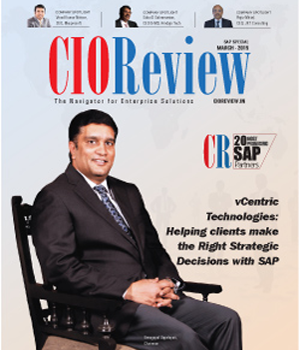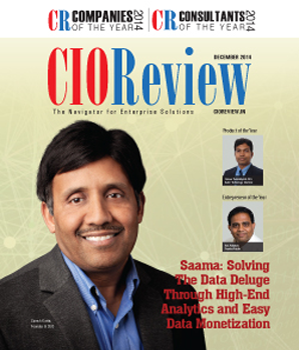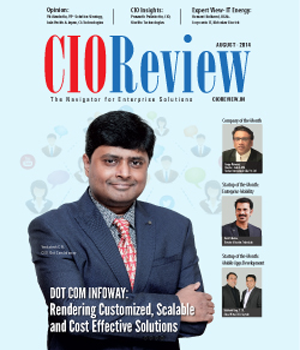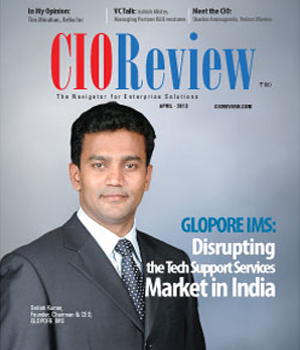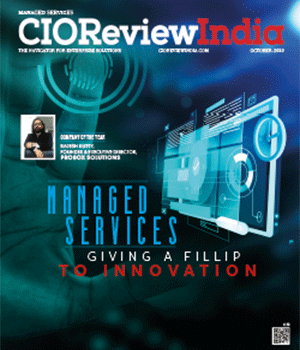
Evolving Expectations For NMS
Brian Clarke, Solutions Architect-Networking and Collaboration, OneNeck IT Solutions | Friday, 27 September 2019, 04:48 IST
 The landscape for Network Managed Services (NMS) providers continues to become more challenging especially as application, management, and compliance requirements keep evolving.
The landscape for Network Managed Services (NMS) providers continues to become more challenging especially as application, management, and compliance requirements keep evolving.
Proactive support is a core component of today’s NMS. IT budgets for small- and medium-sized businesses continue to shrink, yet there is heightened focus on finding ways to squeeze more productivity out of limited resources. NMS can provide a path for existing staff to spend more time in proactive, business-oriented pursuits vs. mundane, reactive tasks.
For example, while Service Level Agreements (SLAs) can range from simple tracking of status (green/yellow/red) on monitored ports to performance and utilization analysis, evolving application requirements and technologies are demanding an increased focus on ensuring SLA contracts meet customer expectations and business requirements. It is necessary for NMS providers to “up their game” to remain competitive. This naturally extends to any organization providing “as-a-Service” offerings (i.e., IaaS, PaaS, SaaS) as well, as customers graduating to higher levels of nimble solution responses.
The Application Landscape
Application performance is more critical than ever, and expectations for NMS have increased accordingly. In fact, application requirements are being driven by:
“Solutions that provide visibility into application performance are becoming more commonplace. Customers with access to these tools expect that their NMS provider to proactively respond prior to user impact”
• Cloud/Software as a Service (SaaS) technologies and adoption
• Business use and social media
• Mobile computing (assumed access to any service from anywhere, anytime)
Understanding what’s driving these requirements and these evolving trends is critical to businesses striving to remain competitive in an ever accelerating digital world. Coupled with the fact that today’s users have a “right here, right now” expectation from their applications, accessed predominantly from their mobile device, the shopper is far more likely to cancel a product search (or order) if response times are unacceptable. Take into account that what’s considered an acceptable response time is shrinking every day, subsequently, you have shoppers with short attention spans who will quickly look for alternatives to complete the transaction.
This results in obvious loss of immediate revenue. Long-term, it likely leads to a greater loss of customer trust and perception of the stability and value of your company.
This is where NMS can play an integral role. An NMS provider can offer insights on application performance, including end-to-end network path analysis and response time indicators (such as latency, delay, and loss). The NMS provider can also develop and implement a strategy that helps your company adapt to the changing application landscape.
Network Management and Visibility
Solutions that provide visibility into application performance are becoming more commonplace. Customers with access to these tools expect that their NMS provider to proactively respond prior to user impact. While NMS has historically focused on reactive response to network outages, this new model requires earlier response, and avoidance of potential loss of revenue.
Network hardware and software manufacturers (such as Cisco, HP) have deep-dived into technologies intended to assist customers in better leveraging existing resources and becoming more efficient and productive. One such effort is intent-based networking. This allows the network team to define the intent, or desired state of the network, after which leveraging orchestration technology to deploy the necessary infrastructure configuration to achieve this state.
These solutions provide deeper visibility into network stability and performance indicators. While obviously a positive thing, this can also raise unwarranted alarms and false positives when it comes to the actual user experience. The risk of this heightened visibility,especially in cases where the customer might also be leveraging such tools locally or via NMS portal access, is that alarms might be raised for non-impactful conditions. Inevitably, this canlead to additional trouble tickets and costs.
Compliance Requirements
Another evolving customer expectation ofNMS providers centers oncompliance standards such as PCI, SOX, and HIPAA. Using HIPAA as an example, encryption for data in transit is a stated requirement. The question becomes, does existing infrastructure provide for this? Customers are expressing an expectation for their NMS providers to deliver solution insight for these new requirements, as well as proactive guidance as the standards evolve.
This often provides subsequent benefits to the provider, given the potential of subsequent infrastructure expansion and project support. It is, however, a very time-consuming process, requiring additional—though necessary—responsibility of providersin order to remain in-line with customer’s budget and compliance. While compliance rules are somewhat “fluid” in nature, this only underscores the provider’s responsibility, as customers are looking for trusted advisorinput to make intelligent decisions.
Summary
How much of this should be the responsibility of an NMS provider? The market drives demand, and customers expect to offload the time they spend “keeping the lights on” while also avoiding actual outages. In addition, they expect proactive guidance, focused on the real business impact of application performance.
How does an NMS provider solve for these evolving challenges? They invest in current technology to keep up with customer tools and visibility. In order to protect themselves, considering heightened customer expectations, NMS providers must be fanatical when defining SLA requirements.
Dig deeper when discussing SLA requirements for new and renewing NMS contracts. Involve both business and technical teams in these discussions to identify and understand:
• Currently implemented tools providing local visibility into network issues and performance
• Application requirements and user experience concerns
• Relevant compliance demands
• Expectations regarding partner provided roadmap information and technology guidance
All of this also demands additional emphasis on NMS team education and heightened interaction with provider architecture expertise to ensure services are keeping up with customer demands and expectations.
It also further urges NMS providers to stay in tune with customer requirements from both technical and business perspectives. Those that are not providing proactive guidance will not remain competitive. Those that provide proactive insight—based upon evolving technology—will remain a trusted advisor.
CIO Viewpoint
With Managed Services Organizations Can Reduce...
By Krishnakumar Madhavan, Head IT & Innovation, KLA Software India Pvt Ltd
By Amandeep Singh, Vice President & Group Head - IT Infrastructure, Thomas Cook India Limited
By Brian Clarke, Solutions Architect-Networking and Collaboration, OneNeck IT Solutions
CXO Insights
Innovation in IT: Meeting Evolving Demands and...
By K Shivasankar, Vice President - Technology & Solutions, India, NTT DATA Inc
Low-Code/No-Code: The Key to Intelligent...
By Sachin Panicker, Chief AI Officer, Fulcrum Digital
Maximizing Business Insight with Big Data...


